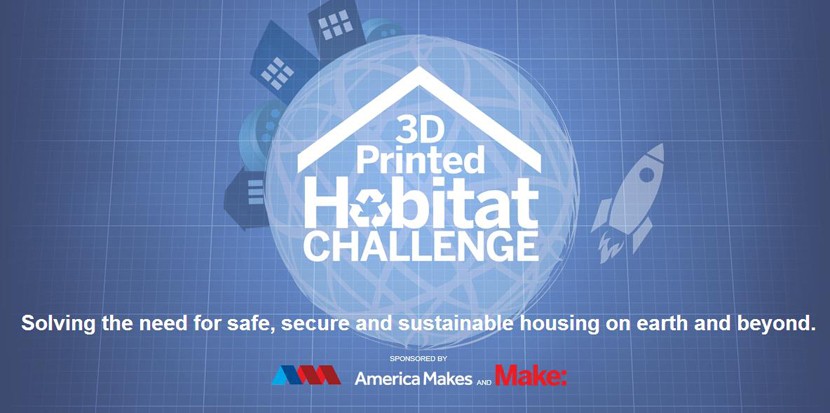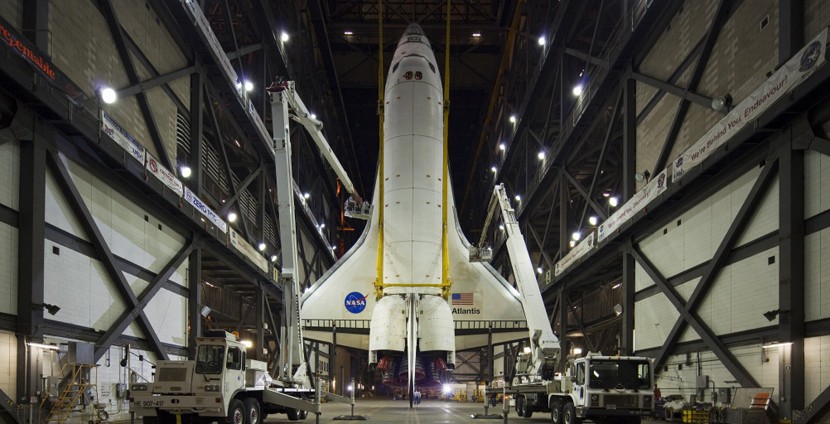Most of us have (at one point or another) dreamed of breaching the horizon and travelling into space, but the sad fact is that the vast majority of us (and that's putting it mildly) will never be able to experience space travel, especially now that Richard Branson's Virgin Galactic project seems to have stalled. Still, NASA have made it possible for two skilled designers to at least send a piece of themselves into the cosmos with an exciting new competition to develop 3D-printed habitations for deep space exploration, that could actually be built using extra-terrestrial materials such as indigenous, planetary materials and spacecraft material generally left as waste. If you're thinking that this all sounds a bit too science fiction to be true (and I honestly wouldn't blame you), then read on.

According to NASA, the competition is intended to “Advance the additive construction technology (a fancy term for 3D printing) needed to create sustainable housing solutions for Earth and beyond.” So effectively, they're looking for designs for effective shelter that could be modified to adapt to extra-terrestrial climates and materials. The statement from NASA adds that “Shelter is among the most basic and crucial human needs, but packing enough materials and equipment to build a habitat on a distant planet would take up valuable cargo space that could be used for other life-sustaining provisions. The ability to manufacture a habitat using indigenous materials, combined with material that would otherwise be waste from the spacecraft, would be invaluable.” When you put it that way it actually doesn't sound so crazy, it actually makes logical sense, as housing is one of the top requirements for us fragile human beings, and constructing a conventional habitat on another planet would require transporting lots of materials that would occupy precious cargo space needed for rations.
An exciting new competition from NASA asks designers to develop 3D-printed habitations for deep space exploration
The project, which is being sponsored by America Makes and Make Magazine, is part of NASA's Centennial Challenges programme designed to advance the additive construction technology needed to create sustainable housing solutions for Earth and beyond. Two $1.1 million (£700,000) top prizes are on offer in what is (rather predictably) being called the “3D-Printed Habitat Challenge,” which is being run in conjunction with the US National Additive Manufacturing Innovation Institute. The competition is split into two phases, with the first calling for architectural concepts for habitations which use 3D-printed techniques. The deadline for this first phase is 27 September and a prize of $50,000 (£32,000) is on offer to one of 30 finalists. The competition’s second phase is split into two parts. One focuses on the fabrication techniques needed to manufacture the habitations and the second challenges designers to fabricate full-scale habitats. These carry the main awards of $1.1 million (£700,000) each. This phase of the competition will launch in September.

NASA Centennial Challenges programme manager Sam Ortega said of the ambitious project: “The future possibilities for 3-D printing are inspiring, and the technology is extremely important to deep space exploration. This challenge definitely raises the bar from what we are currently capable of, and we are excited to see what the maker community does with it.” The hope is that, not only will the entrants help create real-world technologies that can spread habitats to far-off planets (with Mars just being one potential destination), but that there could be some application here on Earth, too. For instance, 3D printed accommodation could be useful in remote locations where conventional building materials are in short supply.
The project is part of the Centennial Challenges programme designed to advance the additive construction technology needed to create sustainable housing solutions for Earth and beyond
This isn't the first time NASA has relied on the public to help them develop future technology of course. They released launched a heavily publicised competition asking for the public to come up with innovative solutions that would allow human beings to live sustainably on Mars. It's also not the first time unusual technologies have been suggested for building homes in distant places. Last year, a team of robotic engineers built swarm of robots based on termites, which together, could form a scalable artificial intelligence system and create towers, pyramids, and castles, forming temporary staircases to allow taller construction to take place. These truly are exciting times!

Benjamin Hiorns is a freelance writer and struggling musician from Kidderminster in the UK. His idea for a sustainable space house solution would almost certainly be dome shaped. Because nothing says “The future” quite like a dome!







Michael Tomes May 19th, 2015, in the morning
I agree Nick. I have a real issue with competition based design. There are whole sites that are now dedicated to it.However I think on this front this is something that really is pushing the boundaries and how else do you find a truly innovative solution other than though competition? If NASA hadn't gone down this route and had commissioned someone, then like all govt departments, they will end up going with one of the big players in the market and get only one potential solution.
Like I said this however is not the normal case. Better this than having to compete against 100 others designers to create a £20 logo ;-)